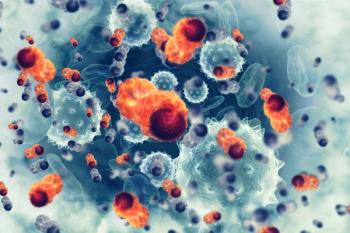
Oncology NEWS International
- Oncology NEWS International Vol 10 No 3
- Volume 10
- Issue 3
Study Clarifies When to Start HIV Therapy
CHICAGO-In HIV-positive patients, antiretroviral therapy should be started when CD4+ lymphocyte counts drop below 350 cells/mL3, according to a new study reported at the 8th Conference on Retroviruses and Opportunistic Infections.
CHICAGOIn HIV-positive patients, antiretroviral therapy should be started when CD4+ lymphocyte counts drop below 350 cells/mL3, according to a new study reported at the 8th Conference on Retroviruses and Opportunistic Infections.
Jon Kaplan, of the Centers for Disease Control and Prevention, reported that of 5,110 HIV-positive individuals who started 2- or 3-drug antiretroviral therapy in 1994 or later, those who began treatment when CD4 counts had dropped below 200 cells/mL3 had a markedly increased risk of death, whereas survival rates were similar for those who began treatment in the range of 350 to 500 cells/mL3.
Based on these results, a federal panel, convened by the Department of Health and Human Services and headed by Anthony S. Fauci, MD, director of the National Institute of Allergy and Infectious Diseases, has recommended that treatment start at CD4 counts of 350 cells/mL3 rather than the previously recommended 500 cells/mL3.
Articles in this issue
almost 25 years ago
First Racial-Ethnic Breast and Cervical Cancer Screening Dataalmost 25 years ago
Mitotic Activity Index IDs High-Risk Node-Negative Breast Canceralmost 25 years ago
Programs Help Women/Physicians Decide on Adjuvant Therapy for Breast Canceralmost 25 years ago
Disclosure Issues in Cancer Gene Testing Worry Doctorsalmost 25 years ago
Functional Assessment of Geriatric Cancer Patients Neededalmost 25 years ago
Mobile Mammography Programs Are Struggling to Survivealmost 25 years ago
Ellence Research Fund Names 11 Grant Recipientsalmost 25 years ago
Hyperfractionated RT Ups Pharynx Cancer Survivalalmost 25 years ago
Internet Creates Virtual Radiology DepartmentNewsletter
Stay up to date on recent advances in the multidisciplinary approach to cancer.
















































































